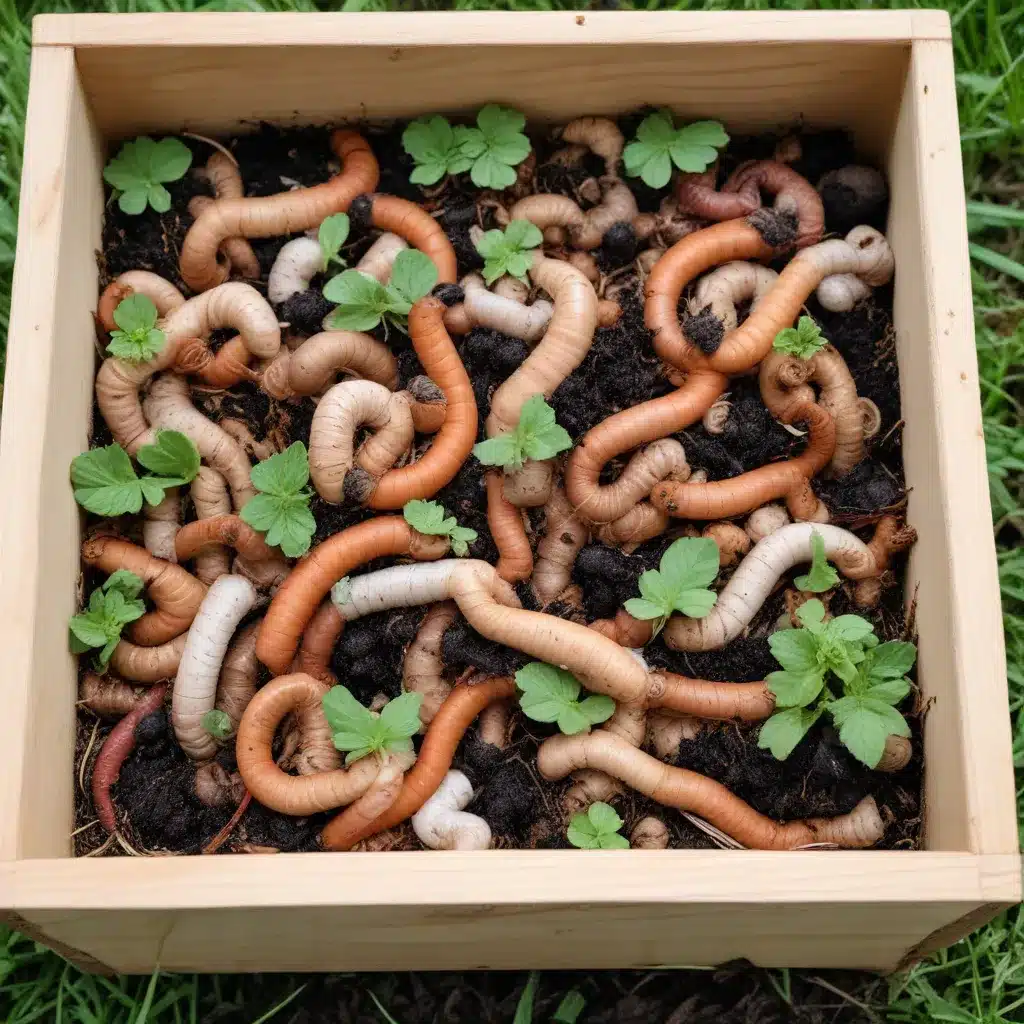
At Crooked Pines Farm, we believe in fostering a deep connection between children and the natural world around them. One of the most engaging and educational projects we love to share with young learners is the art of vermicomposting – using worms to turn food scraps into rich, nutrient-dense compost. Not only is this an invaluable hands-on lesson in sustainability and recycling, but it also allows kids to observe the fascinating behaviors and life cycles of these tiny decomposers.
Vermiculture Fundamentals
Vermicomposting, or vermiculture, is the process of using special types of earthworms, typically Red Wiggler worms, to break down organic matter into a valuable soil amendment called vermicompost or worm castings. These worms are true recyclers, consuming food waste, yard trimmings, and other biodegradable materials and transforming them into a nutrient-packed fertilizer that can nourish your garden, houseplants, and lawn.
Worms play a critical role in the natural decomposition cycle. As they move through the soil, they physically break down organic matter, aerate the earth, and leave behind their nutrient-dense castings. This not only improves soil structure and fertility, but also supports the growth of beneficial microorganisms that are essential for healthy plant development.
The key principles behind successful vermicomposting include maintaining optimal moisture levels, temperature, and food sources for the worms. With the right conditions, these industrious creatures can efficiently process a wide variety of organic waste, reducing landfill contributions and providing an abundant supply of natural fertilizer for your plants.
Worm Bin Design and Setup
One of the best ways to introduce kids to vermicomposting is by helping them construct their own worm bin habitat. These self-contained systems can be as simple or complex as you’d like, and can even be customized to suit your available space and needs.
Some common worm bin designs include:
– Stacking Bins: Multi-tiered systems that allow you to expand the worm population as it grows
– In-Ground Bins: Buried containers that allow the worms to migrate into the surrounding soil
– Plastic Bins or Totes: Inexpensive, easy-to-find options that can be drilled with ventilation holes
Regardless of the container you choose, the key components include a moist bedding material (like shredded newspaper, cardboard, or coconut coir), a drainage layer, and of course, your worm “pets.” You’ll also want to consider factors like bin size, airflow, and accessibility when setting up your vermicomposting system.
At Crooked Pines Farm, we often recommend starting with a simple plastic storage bin or repurposed container. The important thing is to provide a dark, consistent environment for your worms to thrive. Once the bin is assembled, you can introduce your Red Wiggler worms and start feeding them a balanced diet of kitchen scraps, yard waste, and other organic matter.
Maintaining a Healthy Worm Habitat
Caring for a worm bin is a delicate balance, but with a little practice, you and your kids can become expert vermiculturists. The key is to monitor factors like temperature, moisture, and food supply to ensure your worms remain happy and healthy.
Worms prefer a cozy environment between 55-77°F, so you may need to adjust the bin’s location seasonally to maintain this ideal range. They also thrive in moist (but not waterlogged) conditions, so lightly spritzing the bedding with a spray bottle can help regulate the moisture level.
When it comes to feeding, worms will consume a wide variety of fruits, vegetables, grains, and other organic materials. However, it’s important to avoid items high in acidity or fat, such as citrus peels, onions, or oils, as these can upset the worms’ delicate digestive systems. Instead, focus on feeding them a balanced diet of things like banana peels, coffee grounds, shredded paper, and crushed eggshells.
As your worms work their magic, you may encounter the occasional challenge, like foul odors, pest infestations, or changes in the bin’s pH. Fortunately, many of these issues can be quickly resolved by adjusting the feeding schedule, aerating the bedding, or simply relocating the bin to a more suitable spot. The key is to remain vigilant and address any problems before they become larger issues.
Educational Applications
Vermicomposting is an incredibly versatile teaching tool, offering countless opportunities for hands-on learning across a variety of subjects. At Crooked Pines Farm, we love incorporating worm bin projects into our educational programming, from science lessons on decomposition and the nitrogen cycle to art projects inspired by our wiggly friends.
One of the most engaging aspects of vermicomposting for kids is the chance to observe the worms’ fascinating behaviors up close. By setting up a transparent worm bin, young learners can witness the worms burrowing, consuming food, and producing their nutrient-rich castings. This sparks curiosity and encourages them to ask questions, make predictions, and engage in the scientific process.
Beyond just watching the worms, kids can also participate in the hands-on tasks of maintaining the habitat, such as adding new bedding, feeding the worms, and gently sifting through the bin to harvest the finished compost. These practical skills not only teach valuable lessons about sustainability and environmental stewardship, but also foster a sense of responsibility and care for living creatures.
At Crooked Pines Farm, we often incorporate worm bin activities into our educational programming, from school field trips to family-friendly workshops. Whether you’re studying the role of decomposers in the ecosystem, exploring the importance of soil health, or simply looking for a fun, screen-free activity to do with your kids, vermicomposting is an incredible way to connect with nature and learn about the amazing world of worms.
To get started with your own vermicomposting project, head over to Crooked Pines Farm to learn more about our educational resources and upcoming events. Who knows – your kids might just become the next generation of vermiculture experts!


